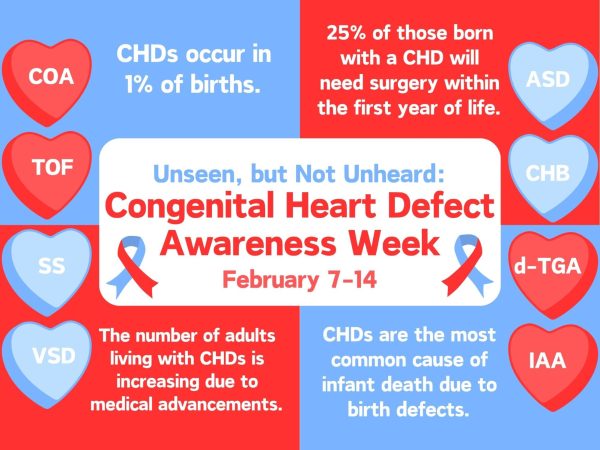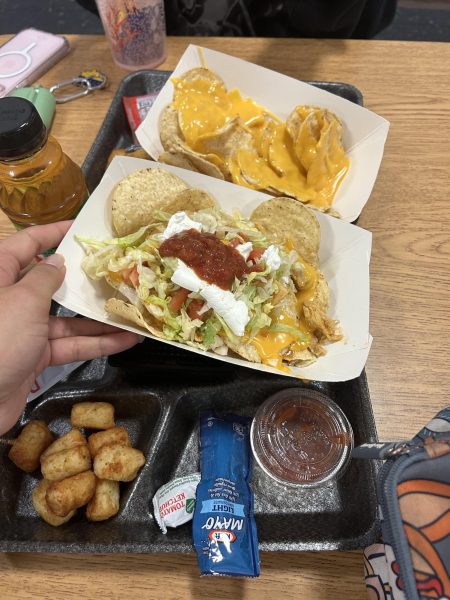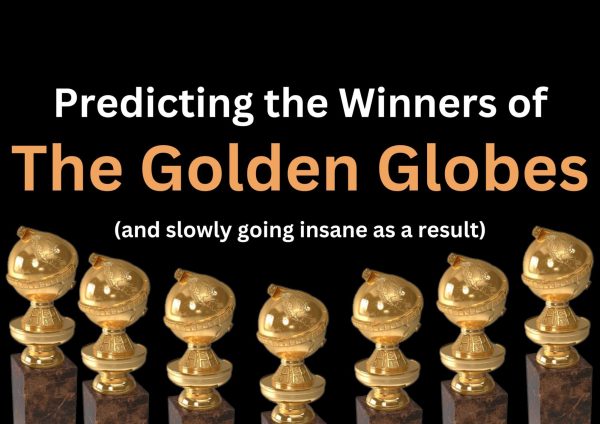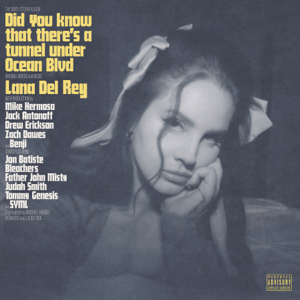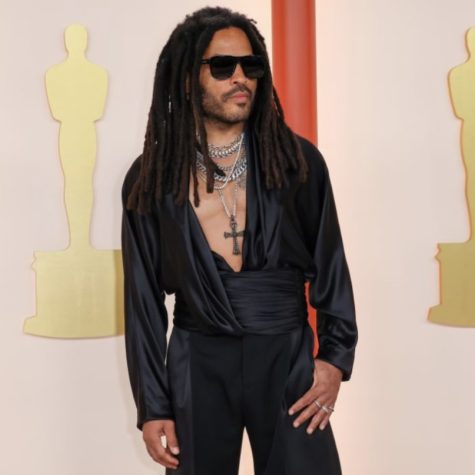“America’s Gun Problem”: A Student’s Opinion
After the Las Vegas shooting in October of 2017, I wrote an opinion piece on gun control. However, it got lost in the editing process, never getting published before the end of the first semester.
Now, here we are again.
Gun control is once again in the news following the deadly Parkland shooting in Florida. The school shooting, which took place Feb. 14, had a death toll of 17, including students, teachers and coaches.
When I wrote my first gun control piece, I didn’t foresee a shooting like Parkland in the near future.
I hoped Las Vegas might be the much-needed catalyst for change in how America discusses gun control. I hoped we would wake up to the fact that we are the only rich country where these mass shootings happen so often.
In the back of my mind, however, I knew that if we as a country were not willing to enact change, we would once again become bystanders to the horrible tragedies of what the New York Times called the “mass shooting generation.”
Sadly, my old piece is just as relevant today as it was in October, and our only hope of stopping mass shootings like this from happening remains to reach an agreement on stricter gun control.
Articles on gun control are particularly commonplace nowadays because of the frequency of mass shootings in our country, and I’m sure if you checked any major news outlet right now, you’d be able to find one.
That said, here is the piece I wrote following the Las Vegas shooting — with some updates.
There’s no escaping tragedies like the Las Vegas (Parkland) massacre.
They seep into every outlet of communication. You see them in the news, read about them all over social media and hear them whispered about in the hallways.
The frequency of mass shootings like the one in Las Vegas on Oct. 1,(Parkland on Feb. 14), seems to leave people numb to their ramifications.
“I’m late to class,” was the first thing senior Beau Kemp said he thought after hearing about the Las Vegas shooting.
Kemp isn’t alone. I talked to multiple students about their feelings following the Las Vegas shooting and there always remained a sense of detachment.
Everyone may have been shocked at the initial news, but nevertheless, the tragedy too quickly faded from the forefronts of their minds.
We’ve become desensitized to mass shootings, but can we really be blamed? Each and every year, it seems that there are new massacres to grieve and remember.
Columbine. Aurora. Sandy Hook.
Charleston. San Bernardino. Virginia Tech.
Pulse. Las Vegas. (Now Parkland).
The sad part is, I couldn’t even recall all of those names off the top of my head.
I had to refer to CNN’s “Deadliest Mass Shootings in Modern US History Fast Facts,” a list of the most deadly shootings from 1949 to now, ranked by a number of fatalities. All in all, there are 33 (Parkland is 34) mass shootings on that list. Each one of these mass shootings is reduced to a “fast fact.”
Those “fast facts” tore apart lives. When combined, those 33 (34) shootings accounted for the deaths of 514 people (531 including the 17 students and teachers killed in Parkland). The average death toll was 15.56 (15.62) people per shooting.
Before Las Vegas, the Orlando Pulse nightclub shooting that occurred on June 12 of 2016 was the deadliest shooting in United States history, leaving 49 families with one less member.
Between Orlando and Las Vegas, 521 other mass shootings occurred, according to the New York Times. The paper defines a mass shooting as one involving four or more people injured or killed in a single event at the same time and location.
I’m not here to say the best solution to America’s gun issue is quitting cold turkey.
It begins with banning the types of weapons that allowed the Las Vegas shooter to fire nine rounds a second, killing 58 people and wounding over 500 others.
Semi-automatic rifles function using larger magazines, typically containing up to 30 rounds. They can even be modified to use magazines containing 100 rounds, as was used in the Aurora shooting.
A typical handgun magazine contains only 10 to 15.
Besides clip capacity, the accuracy of semi-automatic rifles is part of what often makes them the gun of choice for mass shooters.
“Pistols are inherently inaccurate,” said English teacher Jon Karschnik, who formerly served in the Navy.
He said that if someone is shooting from more than 20 feet away with a pistol, he is probably shooting around 50 percent accuracy.
However, the AR-15-style semi-automatic rifle allowed the Las Vegas shooter to kill from 1,098 feet away, according to the Los Angeles Times.
According to The New York Times, at least 23 firearms were found in the hotel suite that the Las Vegas shooter aimed from. Of those 23, three were purchased within the last year.
“This is what happens,” said senior Audrey Shannon. “He easily attained all of those.”
AR-15-style rifles can also be equipped with bump stocks — devices that effectively turn them into machine guns. The Las Vegas shooter had 12 bump stocks.
“I don’t think you need all of that to go duck hunting,” said Shannon.
She’s got a point.
Even if we do accept the fact that wanting to hunt and wanting protection are adequate reasons to legally own a weapon, no one needs a semi-automatic rifle or a bump stock to do so. No deer nor duck is going to require three or more shots per second to kill, and anyone worried about safety should feel satisfied with a concealed carry license and a handgun.
However, many who acknowledge this as truth still don’t believe banning these types of weapons and attachments will actually lead to progress.
“Banning bump stocks or high-capacity magazines isn’t gonna change anything,” said Kemp.
Banning the weapons and attachments that create such opportunity for mass shootings could at least serve as a catalyst for change, however.
Baby steps, one might say.
Many who oppose most forms of gun control stick to the argument that those who really want to kill won’t let regulations stop them, claiming that this idea undermines the worth of gun control laws.
“People are gonna get guns no matter what,” said senior Cole Pieroni. “I’m a pretty firm believer that guns are just a way to do it, but it originated in the person behind it.”
There’s some truth to this sentiment, and we’ve all heard it before: “Guns don’t kill people; people kill people.” While it is true that a gun without a shooter is harmless in theory, we often ignore the fact that, by making guns so readily available, we facilitate this pattern of horrific violence.
In fact, we’ve seen the effectiveness of gun control laws in other areas of the world. In Australia, the government implemented a ban and compulsory buy-back of certain rapid-fire weapons in 1996 after a lone gunman killed 35 people in Port Arthur, Tasmania.
According to the British newspaper The Independent, this gun control measure caused the likelihood of being murdered by a gunshot in Australia to fall by 72 percent between 1996 and 2014.
Australia only banned certain rapid-fire weapons, not all firearms, yet they still saw tremendous results.
What’s to say the United States wouldn’t see the same trend?
According to the Centers for Disease Control and Prevention (CDC), the US saw a rate of 3.5 firearm homicides per 100,00 people in 2014, compared to Australia’s 0.15 per 100,000.
If the United States were to implement gun control measures and see the same 72 percent improvement, the firearm homicide rate would drop to 0.97 per 100,000 people.
This drop would save over 8,000 lives a year.
It’s time for the United States to take a page out of other countries’ books, admit we have a problem and take action to fix it.
We cannot let another Las Vegas (or Parkland) happen, and if we choose to write off gun control legislation or refuse to discuss the topic at all, sadly, the next tragedy is lurking just around the corner.
Like I said, here we are again.
The mass shooting in Parkland has sparked public debate, much of which has been driven by brave survivors of the massacre who are using their voices in this time of grief to incite change.
However, if Las Vegas is any indicator of the success of public outrage when it comes to gun control legislation, we’d be delusional to believe that Parkland will be a turning point.
President Trump, as of Tuesday, told the Justice Department to issue regulations on bump stocks. However, as of right now, bump stocks are still legal.
The AR-15 style rifles used in both Las Vegas and Parkland are still easily accessible for potential killers, equipping them with the tools they need to carry out mass shootings.
The United States still holds the titles for most guns and gun murders per capita among developed countries, according to the New York Times. Gun murders are 30 times more frequent in the United States than in Australia.
We need change.
We need it now.
This time, we cannot let the public outrage and protest remain hollow. This time, we must continue to speak out about our country’s gun issue, but we must also take an active role in seeing our proposed change become a reality. This time, it simply isn’t enough anymore to be a vocal bystander. This time, we cannot let the pressure on our government die down. If we do, another Parkland or Las Vegas is in our future.
In the next few days, this article should get published.
But if it doesn’t, sadly, I might get another chance to use it soon.

Spradling is a senior, and a second year staff member. She serves as the Editor-in-Chief.

